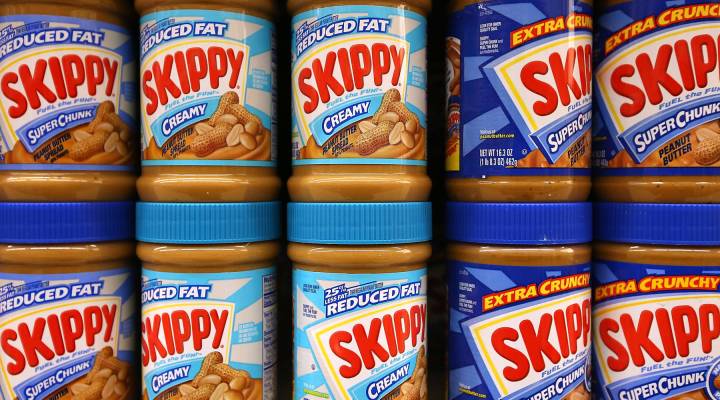
Everything you didn’t know you didn’t know about peanut butter

What’s peanut butter?
That’s the question the Food and Drug Administration was trying to answer in 1959. You’d think it’d be an easy one. They did too.
Federal regulators first set the definition of peanut butter at 95 percent peanuts, five percent sweeteners, oils, and other stuff. Because that’s what peanut butter is, the FDA reasoned. It’s peanuts.
What they didn’t know is that first, short memo would set off a long, complicated legal battle that would change the way we think about food in this country.
It’s a battle we’re covering in the first part of The Uncertain Hour this season, and it can get complicated, so here’s a quick FAQ with everything you need to know about the fight over PB.
Why does peanut butter stick to the roof of your mouth?
It’s a natural — you might say defining — aspect of ground up peanuts. You probably want it there, because it means your peanut butter is the genuine article. That is, until you don’t. It can be hard to spread, especially if the peanut butter starts to separate. Then it’s time to stir.
Why do you have to stir peanut butter up?
Peanut oil is liquid at room temperature, so after a while it’ll pool at the top while the bottom of the jar gets dry and cakey. You’ll need to mix it back up again to keep it spreadable and tasting right.
That’s a pain.
Not really a question, but you’re not alone! It’s a problem that vexed peanut butter makers for years. Skippy was the first one to crack it, with partially hydrogenated oil.
I’ve seen that listed on jars. What’s hydrogenated mean?
Put simply: manufacturers heat up the oil and add hydrogen. The process makes those fats more shelf-stable and solid. It’s used in tons of foods, but for our purposes it means the oil won’t separate and rise to the top. No stirring required. That innovation made Skippy the No. 1 peanut butter brand in the country for decades. Some people are dubious of hydrogenated oils because they can be higher in trans fats and lower in good cholesterol.
How much hydrogenated oil is in my peanut butter?
These days, the FDA says peanut butter must have 90 percent peanuts. The other 10 percent can include the optional ingredients like salt, sugar and other stabilizers like hydrogenated oil. The oil doesn’t have to come from peanuts either, and the big brands use all kinds of oil to cut costs. At one point Jif was just 75 percent peanuts and 20 percent Crisco.
Yikes. So what if I don’t want any of these processed oils in my peanut butter?
Natural peanut butter made from just peanuts is pretty easy to find. But if you don’t want to stir, you’ll have to pick up something like Skippy Natural or Jif Natural. Technically, those aren’t peanut butter at all.
What??
It’s true. Take a closer look at that label: It’s Jif Natural Peanut Butter Spread with 90 percent peanuts. It uses palm oil as a stabilizer, but that’s not one of the FDA’s “optional ingredients” for foods labelled “peanut butter.” So in order to get a “natural” product, you have to eat a “peanut butter spread.”
Regulations are confusing.
You’re telling us. For more on how we got here, subscribe to The Uncertain Hour.
There’s a lot happening in the world. Through it all, Marketplace is here for you.
You rely on Marketplace to break down the world’s events and tell you how it affects you in a fact-based, approachable way. We rely on your financial support to keep making that possible.
Your donation today powers the independent journalism that you rely on. For just $5/month, you can help sustain Marketplace so we can keep reporting on the things that matter to you.












